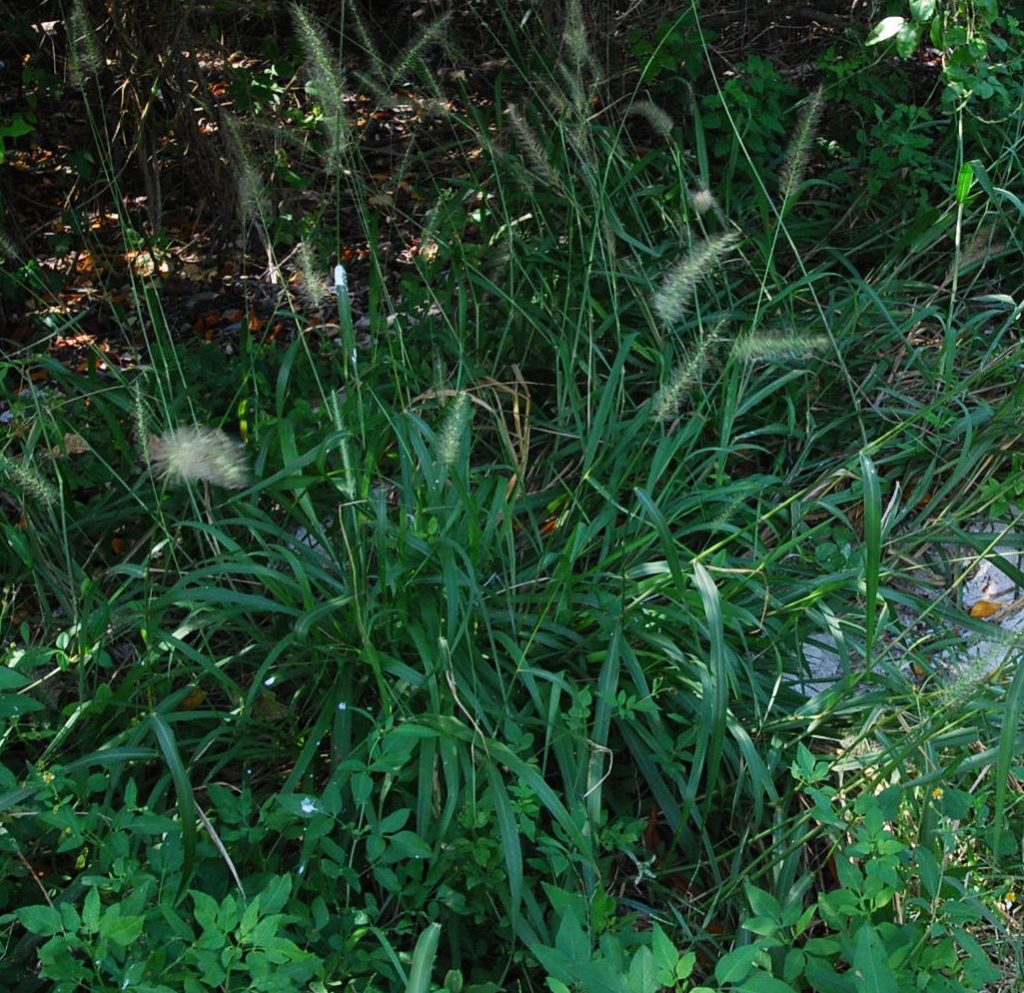
Coastal Foxtail
Setaria corrugata
Coastal Foxtail is also called Coastal Bristlegrass. It occurs in pinelands, sandhills, coastal hammocks, protected areas of beaches, and the edge of salt marshes. The picture above is from Long Key growing under Buttonwood trees. I have found it along the Port Mayaka trail on the east side of Lake Okeechobee.
The three to four foot long stems come from a round clump and don’t wander, although they lay down and may take up a bit of space. The plant rarely gets over three feet tall. Just cut the stems back to the ground in December to rejuvenate the plant.
The seeds ripen in the fall, just when the painted buntings arrive for the winter. Each leaf may be 18 inches long and the seed spike ten inches long by an inch or less wide.
I have planted this under a pine tree, were pine roots make a deep hole impossible, and it is still going strong after six years. Seedlings come up abundantly and fill in any empty spaces.
There are a number of skipper butterflies, like the clouded skipper, that lay their eggs on grasses and will use this plant.
This is one of my favorite shade tolerant grasses and makes a nice replacement for the overused, even though it’s native, Fakahatchee Grass. Its lower height, clumping form and dark green leaves create an interesting mass. The fact that seed eating birds are attracted to it is why I feel that more should be planted.
A mix with shade tolerant ferns like Boston Fern, Goldenfoot fern and Swamp Fern would look nice. Try planting under a Slash Pine, Live or Laurel Oak, Red Maple, Hackberry, Florida Elm, Buttonwood and other trees.
I accidentally killed some by burning the old growth rather than cutting it back. Fortunately the seedlings came up and the planting is refreshed.
A Guide to Florida Grasses by Walter Kingsley Taylor has great pictures and descriptions. Sorry, but not much on the Net.